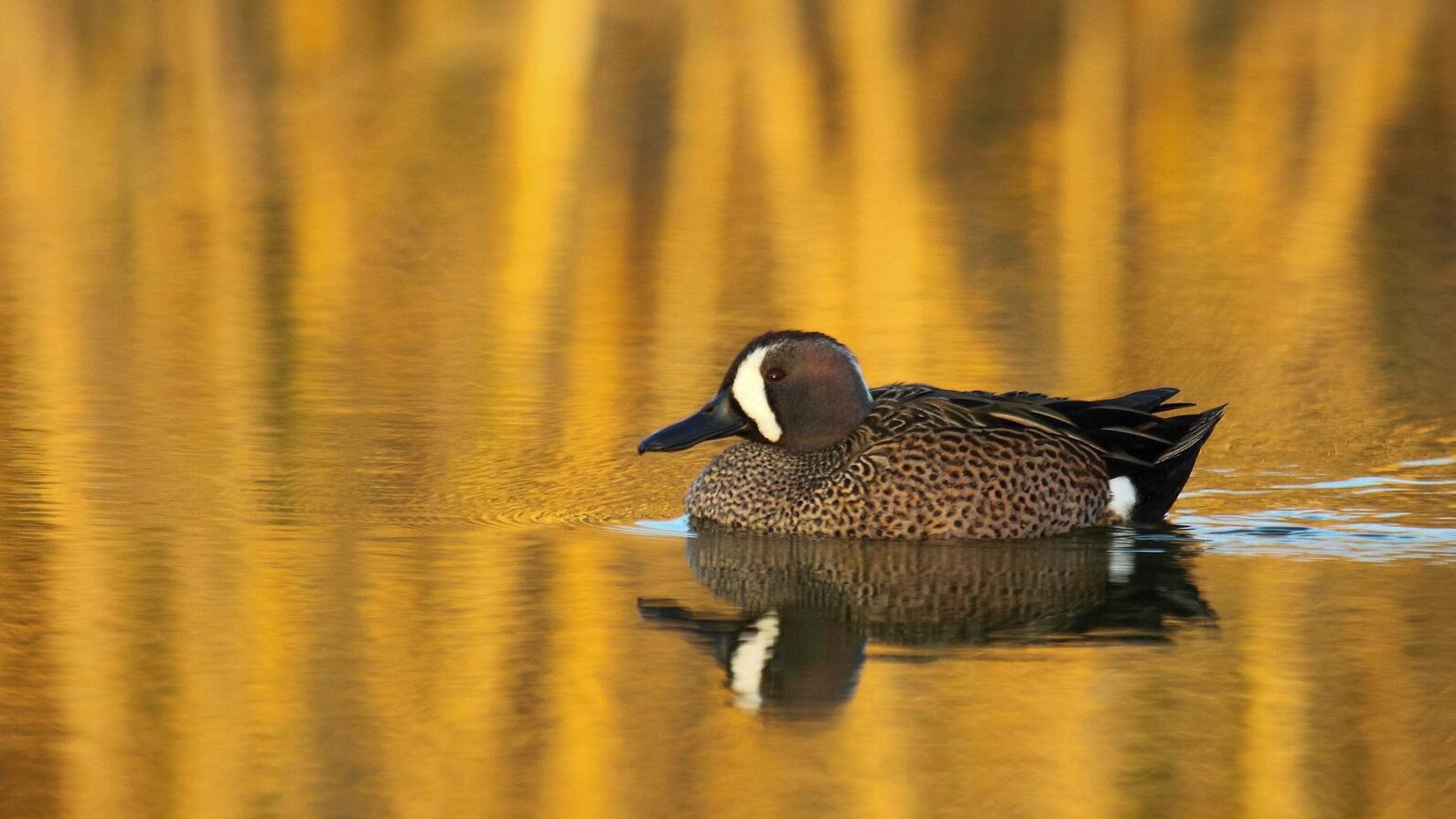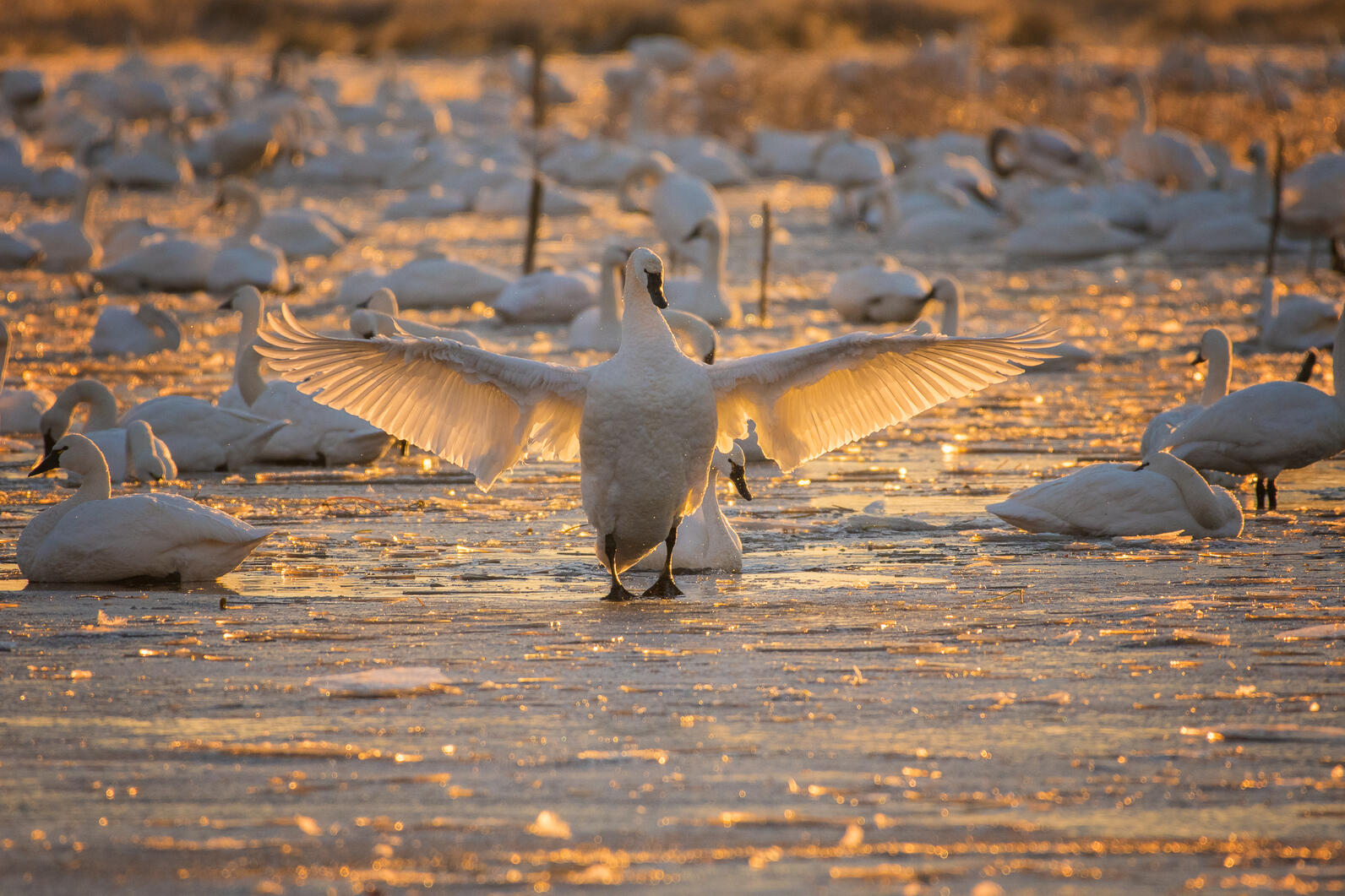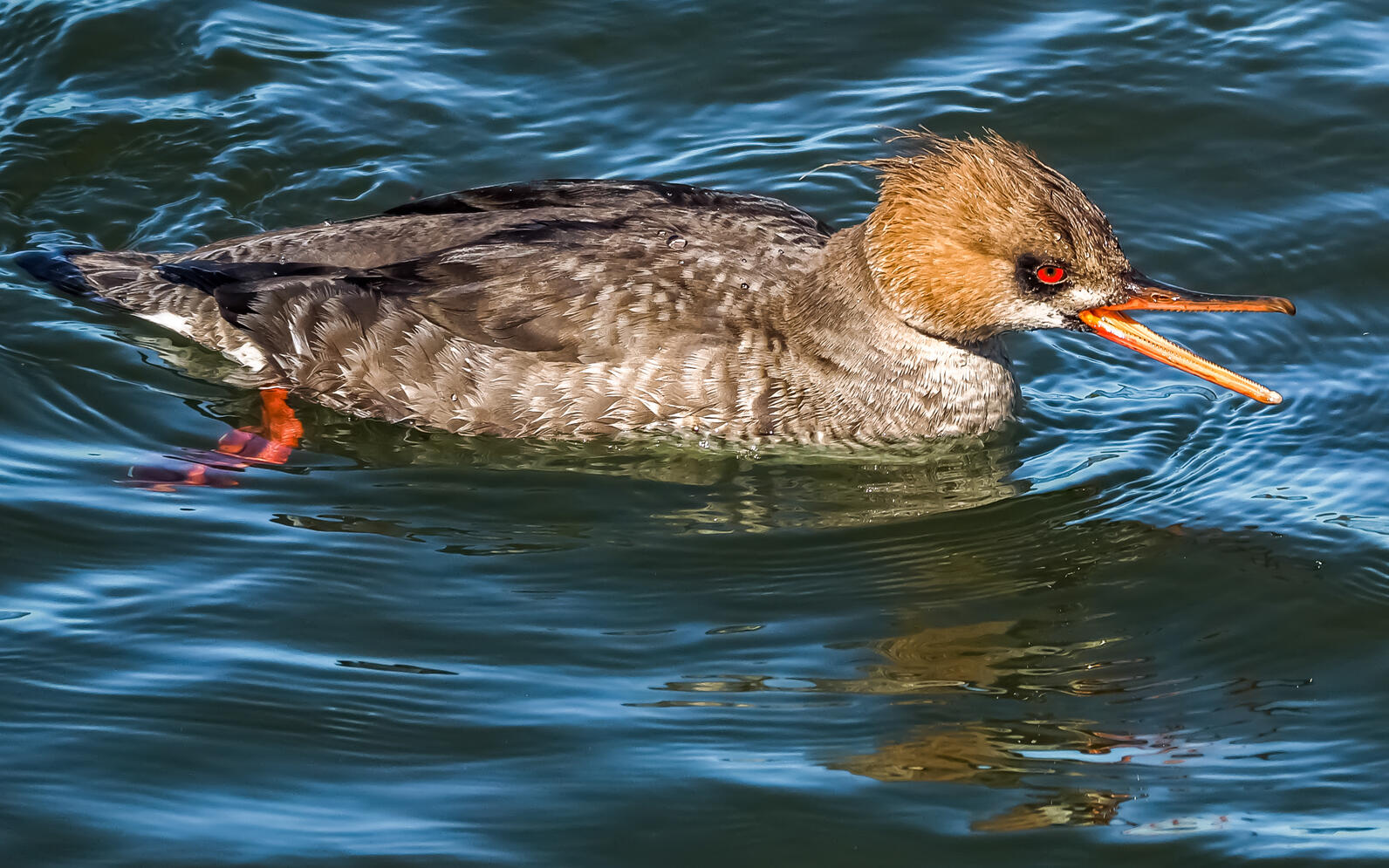Pine Island is not only a popular destination for visitors of the Outer Banks, it is also a stopover and over-wintering spot for many migrating waterfowl during these cooler months. For many birdwatchers and outdoor enthusiasts, this season is all about ducks.
Rosemary Mosco’s comic about “Weird Winter Ducks” struck a chord with birders who are all too familiar with this seasonal phenomenon. If you’re a resident or visitor to the Outer Banks, or really anywhere on the coast, here’s everything you need to enjoy the wild and wonderful waterfowl traveling to and through your neighborhood this season.
Early Arrivals
Starting in early fall, Pine Island bird watchers will begin to see Blue-winged Teals passing through while they’re in transit to their various migratory destinations in the Caribbean, the Gulf Coast, Mexico and Central and South America. As long-distance migrants, Blue-winged Teals must leave their U.S. and Canadian breeding grounds earlier in the fall to accommodate their extended travel routes. The dabbling ducks’ stay in Pine Island is often fleeting, as they merely use the area as a stopover to collect sustenance and rest, before continuing on their journey south.

Big Pulse of Ducks
Between October and December, Pine Islanders should notice a surge in the number of visitors from the duck family, including American Black Ducks, Mallards, Northern Pintails, Green-winged Teals, American Widgeon, and Gadwall. The dowdy brown- and gray-feathered Gadwalls are often overlooked, especially when sharing a habitat with the Teals with their swatches of bright colors. But an interesting way to identify them is by noting their feistiness; Gadwalls are the pirates of the bird world as they often snatch food from diving ducks as they surface.
Some years the ducks will stay in the area throughout the cold season, while other years they merely stop over for 1-2 weeks before moving on to another site for their final wintering destination.
Stately Swans
Tundra Swans, one of the only two native swan species to North America, typically start to emerge on Pine Island during November. Overall, North Carolina provides refuge during wintering for more swans than any other state on the East Coast. Nearly 65,000 to 75,000 swans migrate to North Carolina each fall to take advantage of the abundant food sources here.
These stately birds spend the winter on our coast and can be seen in huge numbers at Pine Island and many other locations throughout the winter through March.

Weird and Wild Ducks
And now for some weirder ducks. Most of the waterfowl mentioned thus far are likely familiar to a common observer, or at least would resemble what most people envision when they think of a duck. But there are a few species on the more outlandish side of the spectrum that also make their home at Pine Island or nearby.

The Red-breasted Merganser sticks out because of its wacky hairdo and bright red eyes. It is one of three fish-eating merganser species in North America, and typically winters just off the beach in salt water but can sometimes be found in the fresh water marshes of Currituck Sound. Look for this bird's slim figure and wiry crest as it dives underwater in search of food.

Scoters are a type of stocky sea duck that winter on North Carolina's offshore waters. All are darkly colored diving ducks, and can sometimes be spotted further inland.
As its name suggests, male Black Scoters are all black with a knobby orange bill. Females and immatures are brownish with a darker cap. These birds float buoyantly on the water, often with tail cocked up noticeably.
Surf Scoters can be distinguished by their bold facial patterns. The male has white spots on its nape, forehead, and base of the bill, while the female is brown and usually shows two patches of white on the face. Look for these ducks near shore, diving beneath waves before they break.
The White-winged Scoter is the largest of the bunch. Males have a white line or comma-shaped patch below and behind the eye, while females are brown with fainter white facial markings. All birds have a white wing patch. These scoters can often be seen flying in long, wavering lines low over the sea.
The Northern Shoveler's name comes from its large, spoon-shaped bill, which is specially adapted to strain food items from the water. This dabbling species can be seen in huge numbers on the sounds and inland ponds of coastal North Carolina during the winter.
Late Arrivals
As the end of the year approaches, Greater Scaup become more prominent around the sanctuary. Greater Scaups have many nicknames across the States, including bluebill, blackhead, greyback and shuffler. Birders are divided on weather the bird earned the name "Scaup" from the "scalps," or shellfish, that it eats, or as a result of the sound of its call of "kaup! kaup!". Keep your ears alert in December and January for their call, and let us know if you think that’s why they got their moniker.
Every year brings new surprises on who will show up, and when they will arrive to the party on Pine Island. Now you know what to expect this season. Let this act as a loose guideline for all of your bird spotting adventures. Comment to tell us if you’ve already seen these, or any other migratory birds this season!
For more information on everything happening this year at Pine Island, visit our website.












